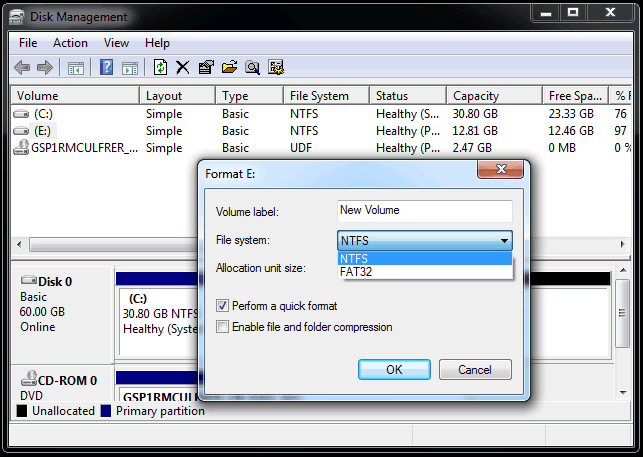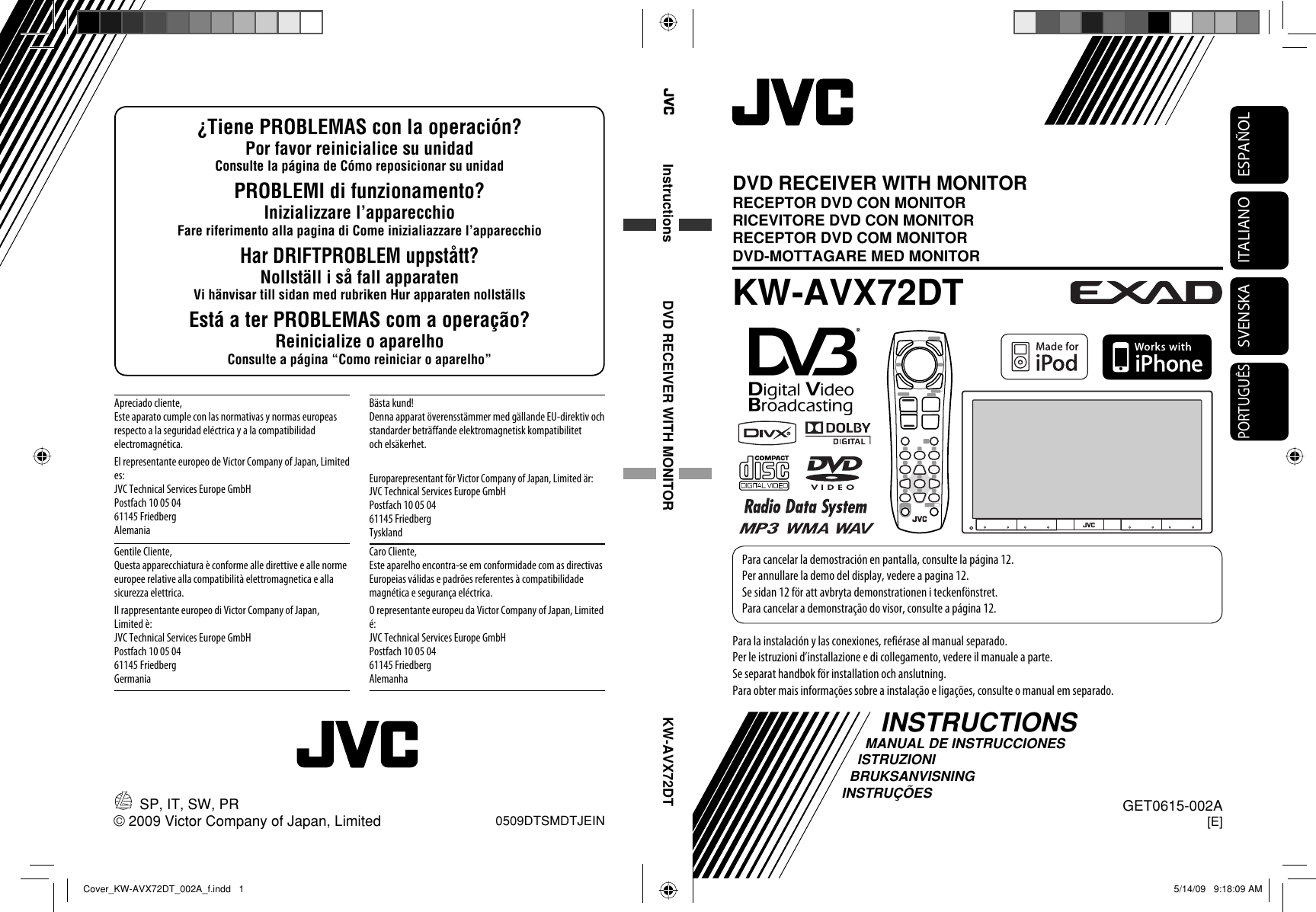44 disk label type: dos
How to Format Your Hard Drive Using DiskPart and Command Prompt? To clean the drives follow the following steps: Step 1 Open Command Prompt. Search command prompt, right-click, and run it as an administrator. Step 2 Type diskpart. Type the command as mentioned above and press ''Enter'' to launch DiskPart. Step 3 Type "list disk". How to check a PC's hard drive model, serial number, firmware version ... Type the following command to name, brand, model, and serial number information and press Enter:wmic diskdrive get model,serialNumber,index,mediaType > C:\PATH\TO\TEXT.TXTThis example exports the ...
dikA's profile - asciinema by dikA 10 days ago. Units = sectors of 1 * 512 = 512 bytes Sector size (logical/physical): 512 bytes / 512 bytes I/O size (minimum/optimal): 512 bytes / 512 bytes Disk label type: dos Disk identifier: 0x40af1f83 Device Boot Start End Blocks Id System /dev/sdb1 2048 10487807 5242880 83 Linux Command (m for help): n Partition type: p primary (1 ...

Disk label type: dos
How to use Microsoft DiskPart to display disk information in the ... Once booted into the System Recovery Disk, click ANALYZE, open a command prompt. As the command prompt, type DISKPART. Below are a few of the more common commands used to determine disk information: LIST DISK - Displays a list of disks and information about them, such as their size, amount of available free space, whether the disk is a basic or ... Issue with total disk space Disk label type: dos Disk identifier: 0x00098c9e Device Boot Start End Blocks Id System /dev/sda1 * 2048 83886046 41941999+ 83 Linux I restarted the Centos Web Panel and it still shows that I have 40G of disk space. « Last Edit: March 29, 2022, 08:42:10 PM by greaterworksbs » Logged sETu. Re: Issue with total disk space ... disklabel(8) - OpenBSD manual pages The disklabel utility can be used to install, examine, or modify the label on a disk drive or pack. The disk label contains information about disk characteristics (size, type, etc.) and the partition layout, stored on the disk itself. It is used by the operating system to optimize disk I/O and locate the filesystems resident on the disk.
Disk label type: dos. DiskPart Command: Manages Disc - Windows Commands- SS64 Commands DiskPart. The DiskPart windows command-line tool is to manage the disc.To be more precise, this command is for disk administration.. CMD Line. CMD Line is a text-based interface that transfers the command from the user to the OS.. CLI-Command Line Interpreter. The command-line interpreter (CLI) for windows is CMD.EXE.Also, you can use PowerShell which can automize many system administration ... Steps To Increase Mount Point Space In Oracle Linux - DBsGuru Repartition the disk. 4. Expand the file system. 5. Mount the mount point. Step 1. Identify Linux disk and VMware Virtual disk: Use command df -Th to get device name and file system type and current utilization. Please note our /u01 mount point device name is /dev/sdf1 and file system is xfs. 4 Ways To Determine The Type Of Drive (HDD or SSD) Installed In Your ... The quickest and easiest way to determine the type of hard drive installed on your computer is using the command line. Go to Run -> powershell. This will open PowerShell. Run the following command: PowerShell "Get-PhysicalDisk | Format-Table -AutoSize". Determine the media type using PowerShell. You can see the type of hard drive ... diskpart | Microsoft Docs Stops the selected virtual hard disk (VHD) from appearing as a local hard disk drive on the host computer. Displays information about the selected disk, partition, volume, or virtual hard disk (VHD). Exits the diskpart command interpreter. Expands a virtual hard disk (VHD) to the size that you specify.
How to: Change Volume Label using CMD in Windows 10, 8, 7 Step 1. In the home interface, right-click the drive that you want to rename and select Change Label. Step 2. In the pop-up window, input the new label that you want to assigned to the drive and click OK. Step 3. You'll return to the home interface, click Apply and Proceed to commit the operation. If you are unsatisfied with the result, you ... What Is a Volume Label of a Drive? - Lifewire Email. A volume label, sometimes called a volume name, is a unique name assigned to a hard drive, disc, or other media. It's not required in Windows, but it's often useful to give a name to a drive to help identify its use in the future. A drive's volume label can be changed at any time, but is usually set during the formatting of the drive. How to Find a Drive's Volume Label or Serial Number - Lifewire Execute the vol command and press Enter to display the drive and serial number. Alternative 1: Use the WIN+E shortcut to open a list of drives with the volume label next to each one. Alternative 2: Use a free system information tool such as Speccy. This article explains three ways to find a drive's volume label or serial number. MS-DOS and Windows command line format command Specifies the file system type ( FAT, FAT32, exFAT, NTFS, UDF, ReFS). /V:label. Specifies the volume label. /Q. Performs a quick format. Note that this switch overrides /P. /C. NTFS only: Files created on the new volume will be compressed by default. /X.
asciicast:494972 - asciinema Disk /dev/sda: 21.6 GB, 21613379584 bytes, 42213632 sectors Units = sectors of 1 * 512 = 512 bytes Sector size (logical/physical): 512 bytes / 512 bytes I/O size (minimum/optimal): 512 bytes / 512 bytes Disk label type: dos Disk identifier: 0x0007f84b Device Boot Start End Blocks Id System /dev/sda1 * 2048 2099199 1048576 83 Linux /dev/sda2 2099200 42213375 20057088 8e Linux LVM Command (m for ... Fdisk command to create and delete partition in Linux Guide 2021 Print partition table: You want print all partition table of hard disk, then you must be on command mode of specific hard disk say /dev/sda. Use following command to select the hard disk and get command mode. #fdisk /dev/sda. OR. $ sudo fdisk /dev/sda. From the command mode, enter 'p' instead of 'm' as we did earlier. Enter Current Volume Label for Drive| How to Find the Volume Label? Since you need to enter the current volume label of a drive, you should gain the value label at first. To find out a volume label of a partition in Windows, you can pick up one among the following three methods as you like. Way 1. Find volume label from Command Prompt. After accessing Command Prompt, you can run "vol x:" to list the volume ... How to use DiskPart to clean and format drive not working on Windows 10 Open Start. Search for Command Prompt, right-click the top result, and select the Run as administrator option. Type the following command to launch DiskPart and press Enter: diskpart. Type the ...
Converting to or from GPT - rodsbooks.com Conversion operations are inherently risky. For safety, I recommend making a backup of your original configuration before converting a disk. In the case of an MBR-to-GPT conversion, the MBR itself is stored on the first sector of the disk, and can be backed up with dd: # dd if=/dev/sda of=backup.mbr bs=512 count=1.
format | Microsoft Docs To add a volume label, type up to 11 characters (including spaces). If you do not want to add a volume label to the disk, press ENTER. ... To perform a quick format operation on a previously formatted floppy disk in drive A, type: format a: /q To format a floppy disk in drive A and assign it the volume label DATA, type: format a: /v:DATA ...
Adding NEW disk group in ASM - ORACLEAGENT BLOG Disk label type: dos Disk identifier: 0x330f95dd. Device Boot Start End Blocks Id System /dev/sdc1 2048 20971519 10484736 83 Linux. Disk /dev/sdd: 5368 MB, 5368709120 bytes, 10485760 sectors Units = sectors of 1 * 512 = 512 bytes Sector size (logical/physical): 512 bytes / 512 bytes I/O size (minimum/optimal): 512 bytes / 512 bytes Disk label ...
[Easy to Go] How to Change Partition Type ID in Windows 10/8/7 ... - EaseUS Step 1. Press Windows + R keys to open the Run dialogue. Type diskpart and hit Enter to run Diskpart. Step 2. Type list volume and press Enter. Step 3. Type select volume # (ex: volume 8) and press Enter to select the volume/partition of which you want to change partition type ID. Step 4.
How to rename or label a disk drive - Computer Hope In the Properties window, on the General tab, type a new name in the Label box (A), click Apply (B), and then click OK (C). Windows 3.x, MS-DOS, and Windows command line. To change the name of a disk drive from an MS-DOS prompt, use the label command. Type the word label. Type the drive letter you want to rename. Type the new name for the drive.
List of DOS commands - Wikipedia This article presents a list of commands used by DOS operating systems, especially as used on x86-based IBM PC compatibles (PCs). Other DOS operating systems are not part of the scope of this list.. In DOS, many standard system commands were provided for common tasks such as listing files on a disk or moving files. Some commands were built into the command interpreter, others existed as ...
How to Check if a Disk Uses GPT or MBR, and Convert Between the Two To access it, right-click the Start menu or press Windows Key+X and select "Disk Management.". You can also press Windows Key+R to open the Run dialog, type "diskmgmt.msc" into the box, and press Enter. Locate the disk you want to check in the Disk Management window. Right-click it and select "Properties.".
Format Disk or Drive in Windows 10 | Tutorials - Ten Forums Format Disk or Drive in Disk Management. You must be signed in as an administrator to use this option. 1 Right click on the Start button to open the Win+X menu, and click/tap on Disk Management (diskmgmt.msc). 5 Select the supported Allocation unit size (aka: "cluster size") you want to use for this drive.





Post a Comment for "44 disk label type: dos"